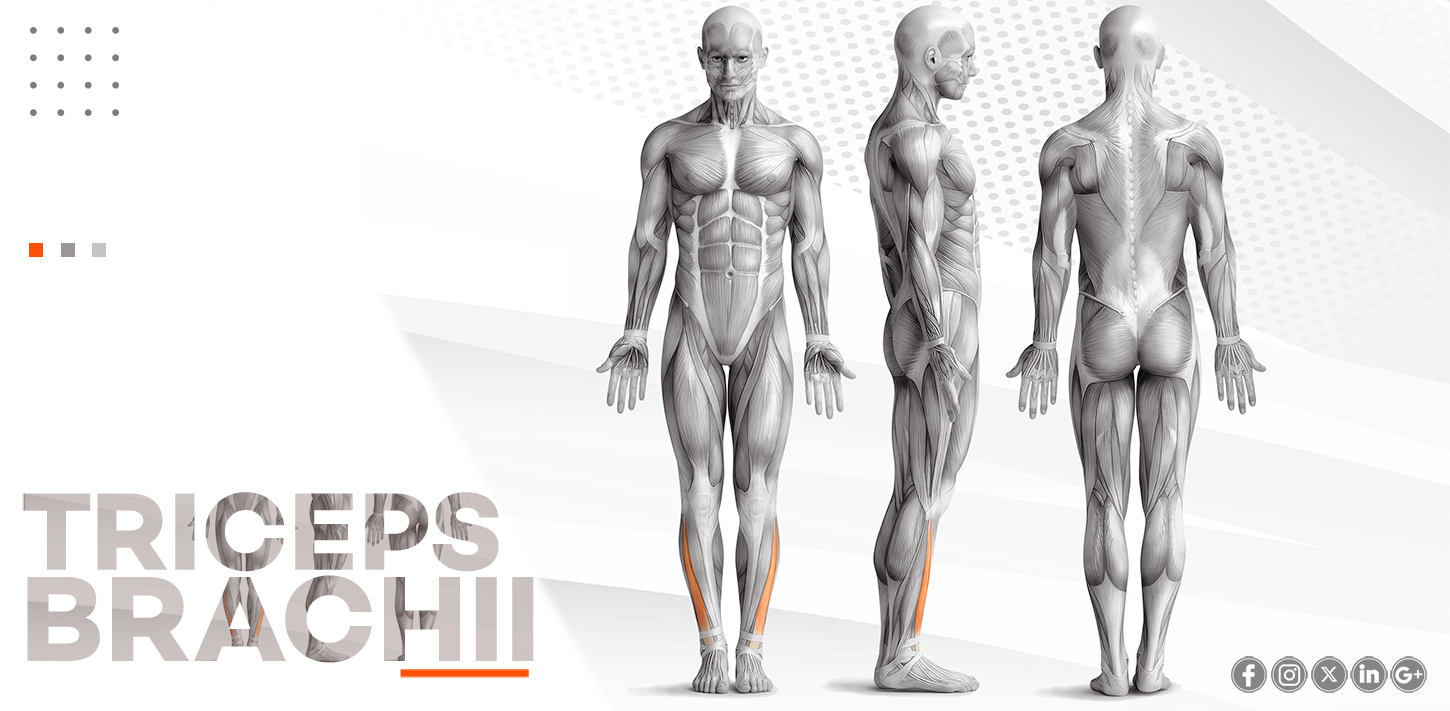GENERAL INFORMATION
The extensor digitorum longus is a muscle located in the anterior compartment of the lower limb. It plays a crucial role in extending the toes as well as assisting in the dorsiflexion of the ankle. Additionally, this muscle is pivotal in activities such as walking, running, and maintaining balance.
ORIGIN
This muscle originates from two sites:
- Firstly, it arises from the lateral condyle of the tibia (shinbone), specifically the anterior surface
.
- Secondly, it also originates from the proximal part of the fibula (the smaller bone of the lower leg), specifically the anterior surface.
INSERTION POINT
The extensor digitorum longus muscle inserts onto the middle and distal phalanges (bones) of the four smaller toes (digits 2 to 5) in the foot. It attaches to the top surface of these bones.
MAJOR ARTERIES
The extensor digitorum longus muscle receives its blood supply primarily from the anterior tibial artery, which is a branch of the popliteal artery. This artery is vital for providing the muscle with oxygenated blood to support its function.
NEURAL INNERVATION
This muscle is innervated by the deep fibular (peroneal) nerve, which arises from the common fibular (peroneal) nerve. This nerve is essential for both motor innervation for muscle contraction and sensory innervation for transmitting sensations.
TRIGGER POINT
Trigger points in this muscle can cause localised pain and tenderness, often due to muscle overuse, strain, or postural imbalances.
CONCENTRIC FUNCTION
The concentric function of the extensor digitorum longus involves actively contracting to extend the four smaller toes, lifting them away from the ground.
ECCENTRIC FUNCTION
During movements like the controlled lowering of the toes, this muscle functions eccentrically, resisting gravity to control the descent.
ISOMETRIC FUNCTION
The isometric function involves contracting the muscle to stabilise the metatarsophalangeal joints, maintaining the toes’ position and resisting excessive flexion.
RELATED MUSCLE SCIENTIFIC NAMES
- Musculus extensor digitorum longus
ANTAGONIST MUSCLES
- Flexor digitorum longus: Located in the posterior compartment, it flexes the four smaller toes, opposing the actions of the extensor digitorum longus.
COMMON INJURIES
Injuries associated with the extensor digitorum longus muscle can significantly impact foot and toe mobility:
- Tendinitis or tendon rupture: Frequently caused by repetitive strain or acute injury, this condition involves inflammation or tearing of the tendon, resulting in pain and impaired function. Prompt treatment is crucial to prevent worsening symptoms.
- Muscle strains or tears: Typically occurring from sudden increases in activity or improper foot mechanics, these injuries can range from minor discomfort to severe disruption, necessitating rest and possibly medical intervention.
- Compartment syndrome: Although rare, this serious condition involves increased pressure within the muscle compartment, which can compromise circulation and nerve function, requiring emergency treatment.
EXERCISES
Regular exercises targeting the extensor digitorum longus are vital for maintaining toe and ankle health:
- Toe extensions using resistance bands: This exercise aids in strengthening the toe extensors and improving flexibility, which is crucial for activities that involve running and walking.
- Ankle dorsiflexion activities: Focused on increasing ankle mobility, these activities help prevent stiffness and enhance motion range. Which is important for overall lower limb health.
- Toe curls with towel scrunches: Curling the toes to pull a towel enhances toe dexterity and strength. Which is beneficial for balance and gait.
- Balancing activities on unstable surfaces: These exercises are designed to challenge and improve proprioception and muscular stability in the lower limbs, which is crucial for injury prevention.
STRETCHES
Implementing stretches for the extensor digitorum longus can aid in flexibility and prevent stiffness:
- Toe flexion stretch: This stretch helps alleviate tension in the extensor muscles, promoting relaxation and reducing the risk of strain.
- Ankle dorsiflexion stretch: Targeting the muscles that lift the foot, this stretch is essential for maintaining ankle flexibility and preventing stiffness, which can affect gait and balance.
- Calf stretches: By extending the calf muscles, these stretches indirectly benefit the extensor digitorum longus by promoting lower leg flexibility, which is crucial for pain-free movement.

